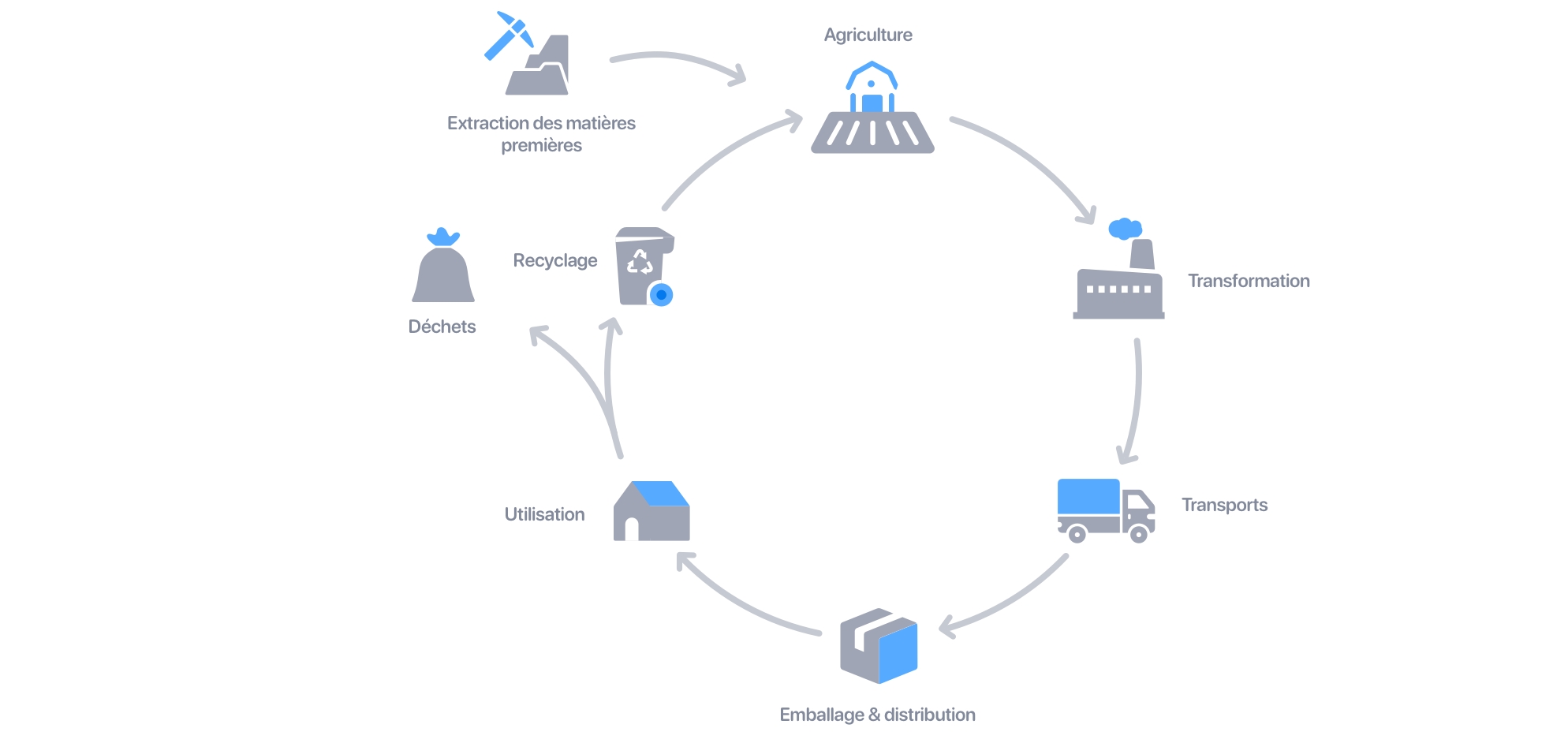🇧🇪Presentation
Welcome to the documentation of the "Green-score" (formerly Eco-score) environmental rating for Belgium.
The Green-score (the new name for Eco-score) is an indicator representing the environmental impact of food products. After classifying products in 5 categories (A, B, C, D, E), it now classifies products in 7 categories (A+, A, B, C, D, E, F), from the lowest impact to the highest.


The environmental impact takes into account several factors on air, water, ocean and soil pollution, as well as impacts on the biosphere:
Greenhouse gas emissions (CO2)
Ozone layer destruction
Fine particle emissions
Photochemical oxidation
Acidification
Radioactivity
Depletion of water resources
Freshwater pollution
Depletion of non-renewable resources
Eutrophication (terrestrial, freshwater & marine)
Land use
Toxicities (freshwater & human)
Loss of biodiversity
The impacts are studied throughout the product's life cycle:

Objective of the process
Food is the main sector responsible for climate change. Globally, it represents 28%[1] of greenhouse gas emissions, 70%[2] of drinking water consumption and the majority of packaging waste.
Agriculture occupies 1/3 of the land surface on the planet and it is also the main factor of deforestation, but it is possible to drastically reduce its impact by consuming differently.
The starting point of this approach is to have enlightened information on the environmental impacts of the products consumed. The ambition of the Green-score is to be a decision-making tool in order to guide our food choices towards a more sustainable mode of consumption.
By encouraging more virtuous agricultural practices and choosing a diet that preserves our environment, we can thus actively contribute to preserving resources, containing global warming below 2° C and preserving life for future generations.
[1] Institute for Climate Economics. (2019). Estimating greenhouse gas emissions from food consumption
[2] OCDE (2020). Agriculture and water policy changes
Engaged actors
The Green-score is jointly offered by several digital players who share the common ambition to set up a simple tool to reduce the impact of food on the planet:




Actors consulted
We warmly thank the experts who provided their technical support and their critical view of the process.



Vincent Colomb (ADEME), Martin REGNER (ADEME), Anne DESERABLE (Quantis), François Witte (Quantis), Samuel CAUSSE (EVEA), Pauline ROIGNANT (EVEA), Thomas UTHAYAKUMAR (WWF), Laura CHATEL (Zero Waste), Geraldine GAUVIN (CITEO), Valentin FOURNEL (CITEO), Nicolas Pont (Veolia)
—
¹ Institute for Climate Economics. (2019). Estimating greenhouse gas emissions from food consumption ² OCDE (2020). Agriculture and water policy changes
* This scheme is part of an experiment led by the French Ministry for Ecological Transition.
Last updated